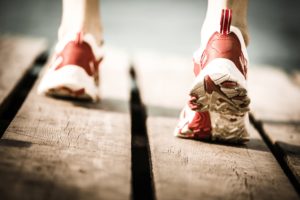
Potential is about possibilities. It is the distance from where we are to where we want to go. To reach our potential, our undeveloped promise, is always a stretch. Everyday we have to be reaching for the next step, making the next decision, committing to the next action. That takes courage.
“One isn’t necessarily born with courage, but one is born with potential. Without courage, we cannot practice any other virtue with consistency. We can’t be kind, true, merciful, generous, or honest,” Maya Angelou tells us.
Growing our potential is dependent on having courage. Courage to dream. Courage to go after our dreams. Courage to live our dreams. Courage to overcome discouragement.
Our first step to help our children realize their potential may be to encourage them when they have lost heart and want to give up.
In their inexperience the stretch ahead may look and feel too hard and too scary. Obstacles may loom insurmountable. To encourage our children we give them our calm and confident support, that yes, they can do it. Our leadership unlocks our children’s potential to become better.
In 1940 a baby girl was born prematurely, weighing 4.5 pounds.
She was the 20th of 22 siblings born into a poor black family in Tennessee. As a child she suffered one illness after the other: measles, mumps, scarlet fever, chicken pox and double pneumonia. When she was four years old she contracted polio that left her left leg and foot twisted and weak. The doctor told her parents that she would never walk and that there was no cure.
Her mother found out that she could receive treatment 50 miles away at Fisk University’s black medical college at in Nashville. For two years, this young girl’s mother took her there twice a week, until she was able to walk with a metal leg brace. The doctors showed her mother how to do the physical therapy at home. She in turn taught all the brothers and sisters to help and encourage this young girl to work and stretch to regain her ability to walk and be healthy.
When she was twelve years old, she finally could walk without her brace, her crutches or her corrective shoes.
She took the next step. She made the next decision. She committed to the next action. She decided to become an athlete.
She joined her school’s basketball team because her older sister was on the team. But she sat for three years on the bench. To stay busy outside of basketball season, this teen-ager joined the track team. When she was a sophomore in high school the Tennessee State track and field coach saw her play and encouraged her to join his summer program where she trained and raced with the Tigerbelles for two years.
During her high school years, she became a basketball star setting state records for scoring and leading her team to the state championship.
At the age of 16 she was selected to be on the U.S. Olympic track and field team and came home from the 1956 Melbourne Games with an Olympic bronze medal in the 4 x 100 m relay.
At the 1960 Summer Olympics in Rome she won three Olympic titles: the 100 m, 200 m and the 4 x 100 m relay. In 1960 she was nicknamed “The Tornado”, the fastest woman in history.
When she returned home to Clarksville she asked that the parade and banquet in her honor be open to all—black or white—making those events the first fully integrated functions in her city.
A story of potential. A story of courage. A story of encouragement. A story of Wilma Rudolph, “the Tornado” from Tennessee.

